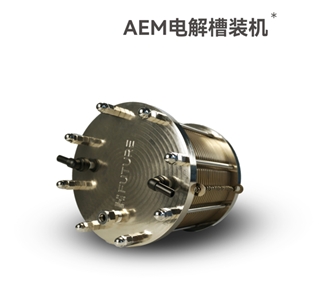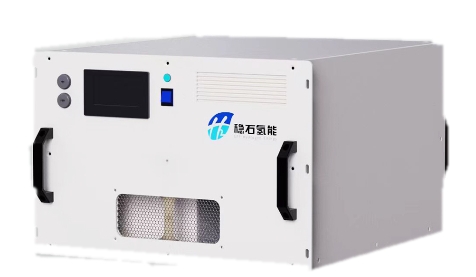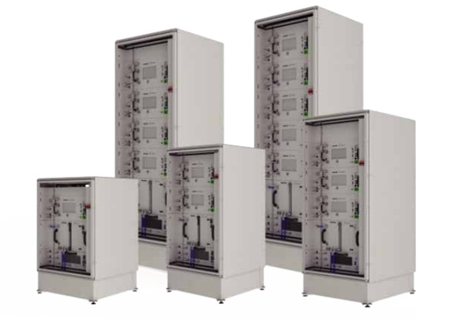






The outbreak of the hydrogen energy industry has always been guided by policies. In 2025, the National Energy Administration's "Notice on Organizing and Conducting Pilot Work on Hydrogen Energy in the Energy Sector" clearly outlines two major directions for hydrogen production pilot projects, with "advanced flexible off-grid hydrogen production" directly targeting the core application scenarios of AEM. The policy proposes constructing a "wind-solar-hydrogen-storage integrated" architecture in areas with weak power grids, such as deep-sea, sandy-gobi-desert, and "high-altitude, remote, border, and island" regions, requiring a supporting electrolyzer scale of no less than 10 MW. This direction aligns highly with the technical characteristics of AEM.
From a national perspective, this policy is not isolated. Since the "Medium and Long-term Plan for the Development of the Hydrogen Energy Industry (2021-2035)" listed hydrogen energy as an important component of the future energy system, various regions have intensively introduced supporting policies during the "14th Five-Year Plan" period: "sandy-gobi-desert" regions such as Inner Mongolia and Gansu have incorporated wind-solar-hydrogen-storage projects into provincial plans, while coastal provinces such as Guangdong and Zhejiang have focused on deep-sea wind power hydrogen production pilot projects. These policies collectively construct a dual-track development system of "large-scale hydrogen production + off-grid flexible hydrogen production," with the flexibility requirements of off-grid scenarios providing a policy window for AEM's differentiated competition.
Compared to large-scale hydrogen production (which requires an electrolyzer scale of no less than 100 MW as per Direction One), the off-grid hydrogen production pilot has a lower scale threshold (10 MW), making it more suitable for AEM in the technology iteration period to conduct commercial verification. Meanwhile, the policy emphasizes "flexible coordination between renewable energy output, energy storage charging and discharging, and electrolyzer load," while AEM's wide load regulation capability (theoretically supporting 10%-100% load fluctuations) precisely matches the instability of wind and solar power generation, becoming a "technical lever" for policy implementation.
Among the hydrogen electrolyzer technology spectrum, AEM is breaking the binary pattern of ALK and PEM with its characteristic of "balancing cost and efficiency."

The above figure is sourced from Future Hydrogen Energy
Cost side,AEM does not rely on the precious metal catalysts (such as platinum) required by PEM. Jiping has already launched a 50% platinum-nickel catalyst, and non-precious metal electrode products from enterprises like Future Hydrogen Energy and Juna Technology have further reduced catalyst costs by over 60%. Meanwhile, its structure is more compact than ALK, with system integration costs 15%-20% lower than ALK.
Efficiency side,AEM's electrolysis efficiency can reach 75%-80%, higher than ALK (70%-75%) and close to PEM (80%-85%). Moreover, its efficiency decay rate during low-load operation is only 5%-8%, far lower than ALK's 15%-20%, perfectly adapting to the fluctuating characteristics of wind and solar power generation.
Uneven technological maturity:On the material side, the performance of catalysts and electrodes has nearly met commercial requirements. For instance, the activity of Jiping platinum-nickel catalyst has reached 0.8A/cm²@1.8V (under a voltage condition of 1.8 volts, the current density per unit area on the catalyst surface reaches 0.8 amperes per square centimeter). However, membrane lifespan remains the biggest bottleneck.
Clear cost reduction path but not yet at the critical point:Currently, the cost of a megawatt AEM electrolyzer is approximately 8,000-10,000 yuan/kW, higher than that of alkaline electrolyzers (5,000-6,000 yuan/kW) but lower than that of PEM (15,000-20,000 yuan/kW). With future scale-up production and improvements in membrane lifespan, it is projected that costs could drop to 6,000-7,000 yuan/kW by 2028, potentially aligning with alkaline electrolyzers.
Policy-driven stronger than market-driven:Existing projects mostly rely on policy subsidies or corporate R&D investments. Truly market-oriented orders like the 5MW project of Qingneng are still rare. The business model needs to find a balance point in "green hydrogen premium + cost advantages in off-grid scenarios."
In the first half of 2025, the AEM sector will exhibit explosive growth in "material breakthroughs + equipment iteration + project implementation," with the actions of top-tier enterprises outlining a clear path to industrialisation.

The above image is from Winstone Hydrogen Energy.
On the material side,Future Hydrogen has completed the expansion filing for catalyst and electrode materials. Jiamo Technology's first domestic 60,000㎡ AEM production line has entered commissioning. Juna Technology's JE series electrode products have been commercialized, indicating that the localization rate of core materials has exceeded 60%, breaking away from dependence on overseas membrane materials.
On the equipment side,The leap from kilowatt to megawatt levels has become the core focus. Future Hydrogen delivered a 125KW electrolyzer to Huaneng Jiuquan Power Plant. Qingneng signed a 5MW system order. Wolong Inertech delivered the first domestic megawatt-level equipment overseas. EVE and Zhejiang Sunshine Lighting's megawatt-level projects have been approved, showing that the power level of equipment is rapidly approaching the "10MW level" required for commercial applications.
On the scenario side,Off-grid projects have become a breakthrough. The Sanxia Energy Beihai Green Hydrogen Production Project explicitly focuses on "megawatt-level off-grid AEM technology" as the core, exploring an integrated model of wind, solar, hydrogen, and storage. Projects in Lvliang, Shanxi, and Huizhou focus on low-cost equipment R&D, directly addressing the commercialization pain points of AEM.
In the next 5-10 years, AEM electrolyzers are expected to achieve breakthroughs in three major scenarios, becoming the "third pole" in hydrogen production technology.

The above figure is from Wolong Technology.
Off-grid Wind and Solar Hydrogen Production Scenario:In areas with weak power grids, such as deserts, gobi regions, and deep-sea areas, AEM's wide load regulation capability highly matches the requirements for off-grid grid-forming. According to estimates, when the fluctuation rate of wind and solar power generation exceeds 30%, AEM's comprehensive levelized cost of electricity (LCOE) is 15% lower than that of PEM and 8% lower than that of ALK, making it the optimal technological choice for this scenario.
Distributed Hydrogen Production Scenario: In small- to medium-scale distributed projects ranging from 1-10MW, AEM's compact structure (with a 40% smaller footprint compared to ALK) and low maintenance requirements, i.e., the elimination of the need for an electrolyte circulation system like alkaline electrolyzers, will enhance its competitiveness. It is particularly suitable for on-site hydrogen production scenarios in industrial parks, transportation hubs, etc.
International Market Breakthrough:The global expansion efforts of enterprises such as Wolong Inergy and Wenshi Hydrogen Energy indicate that AEM possesses cost advantages in emerging hydrogen energy markets (such as Chile and Southeast Asia). Compared to PEM equipment in Europe and the United States, domestically produced AEM equipment is 30% cheaper and better adapted to complex environments with high temperatures and dust, potentially replicating the "domestic substitution - global leadership" path of PV equipment.
Challenges to Remain Vigilant About:If the membrane lifespan cannot exceed 8,000 hours before 2027, AEM may miss the policy window period. Meanwhile, the cost reduction of PEM electrolyzers and the efficiency improvement of alkaline electrolyzers will compress AEM's survival space, with the speed of technological iteration determining the market landscape.
The rise of AEM electrolyzers is essentially driven by the hydrogen energy industry's inevitable demand for "efficient, low-cost, and flexible" hydrogen production technologies. Against the backdrop of policy-driven off-grid hydrogen production and the continuous increase in the proportion of wind and solar power generation, AEM, with its unique technological characteristics, is transforming from a "backup option" to a "core option." In the next three years, breakthroughs in membrane materials and large-scale production will be the key to determining whether AEM can "break through." For enterprises, it is necessary to focus on material innovation and system integration to achieve the transition from "technological leadership" to "market leadership" within the policy dividend window period. For the industry, the maturity of AEM will enrich the hydrogen production technology matrix and accelerate hydrogen energy's role as the "ultimate piece" in global energy transformation.
For queries, please contact Lemon Zhao at lemonzhao@smm.cn
For more information on how to access our research reports, please email service.en@smm.cn